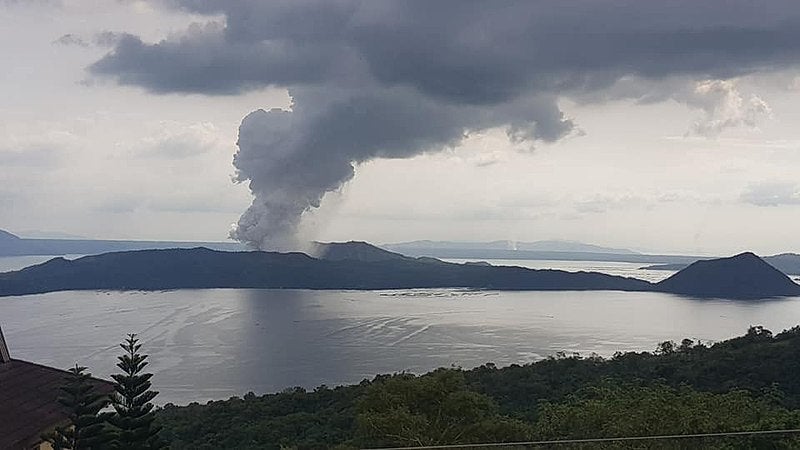
All flights to and from Manila’s Ninoy Aquino International Airport in the Philippines were suspended on 12 January as the Taal Volcano in the Province of Batangas erupted.
The volcano eruption caused a 1km-high ash plume, along with rumbling sounds and tremors earlier in the day.
On 12 January, the airport tweeted: “Flight operations at the Ninoy Aquino International Airport have been temporarily suspended due to the volcanic ash from the eruption of Taal Volcano. Kindly coordinate with your respective air carriers for details on flight schedules.”
The airport resumed partial operations on 13 January. The Philippines Department of Transportation, Manila International Airport Authority and the Civil Aviation Authority jointly stated that flight arrivals would be based on slot availability.
Flightaware24 tweeted on 13 January: “Flights are operating in Manila as the ash cloud from Taal moves away from the airport. Still, a high level of flight disruption and a reduced operating schedule with nearly 400 flights cancelled today.”
Manila’s second airport, Clark International Airport, remained open but could also be temporarily closed if the ashfall is thought to affect its flight operations.
How well do you really know your competitors?
Access the most comprehensive Company Profiles on the market, powered by GlobalData. Save hours of research. Gain competitive edge.

Thank you!
Your download email will arrive shortly
Not ready to buy yet? Download a free sample
We are confident about the unique quality of our Company Profiles. However, we want you to make the most beneficial decision for your business, so we offer a free sample that you can download by submitting the below form
By GlobalDataThe volcano is located in a lake and is one of the country’s tourist attractions. Nearby residents have been evacuated from the area.
Reuters reported Philippine Institute of Volcanology and Seismology (Phivolcs) head Renato Solidum as saying: “Taal is a very small volcano, but a dangerous volcano. It is unique because it is a volcano within a volcano.”
Early on 13 January, Phivolcs reported that a ‘weak’ lava fountain had erupted for an hour and a half from the volcano.
Solidum noted that this is not an indicator that the volcano has entered the phase of hazardous explosive eruption, however, it may still be possible in the future.





